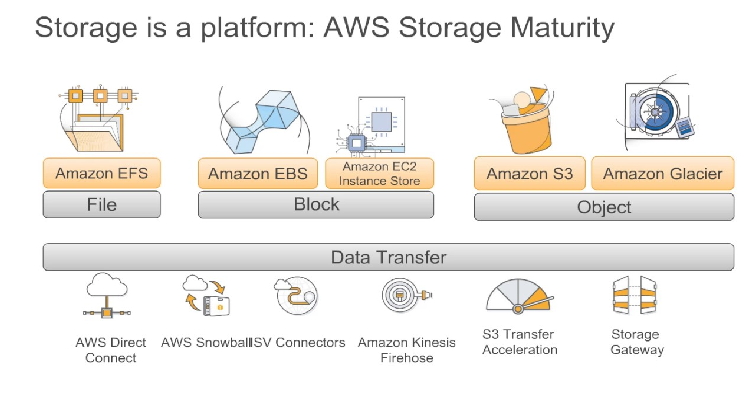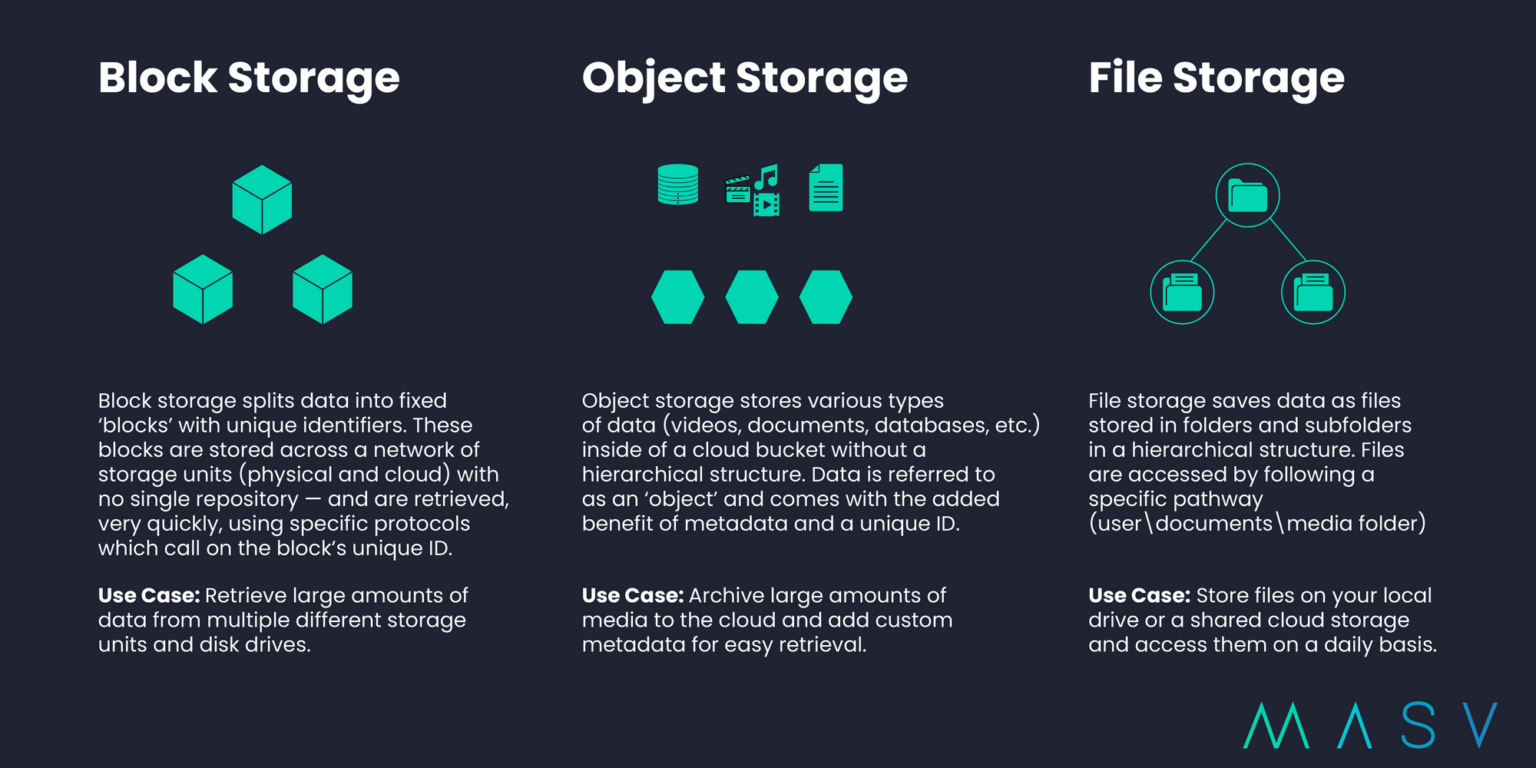
Object based storage also lends much greater flexibility to metadata. Thanks to the flat address structure, the object can be retrieved in the same fashion. The data could be physically stored on a local server, or a remote server thousands of miles away in the cloud.

You can retrieve an object from storage by simply presenting its unique ID, thus making information much easier to find in a large pool of data. You can give a single object a unique identifier and store it in a flat memory model. Object Based Storage: A Complex Solution for Complex Storage NeedsĪs the name suggests, object-based storage stores data in isolated containers known as objects.
#OBJECT STORAGE VS FILE STORAGE SOFTWARE#
Virtual machines: Virtualization software vendors such as VMware use block storage as file systems for the guest operating systems packaged inside virtual machine disk images. RAID: Block storage can create an ideal foundation for RAID arrays designed to bolster data protection and performance by combining multiple disks as independent volumes. Email servers: Block storage is the defacto standard for Microsoft's popular email server Exchange, which doesn't support file or network-based storage systems. Block Storage Use Cases The unique ability to create volumes that essentially act as hard drives makes block storage useful for a wide range of applications, including: Databases: Block storage is common in databases and other mission-critical applications that demand consistently high performance. Under ideal conditions, this granular control helps create the high-performance environment block storage is so well known for.

The system allocates storage for different applications, decides where data goes in the block, and makes provisions with tools that are not available to other types of storage. Instead, the controlling operating system determines how storage management. Unlike in file-based architectures, there are no additional details associated with a block outside of its address. One of the most interesting things about block storage is how it handles metadata. For example, organizations often use supported third-party tools to manage and backup the data placed in block storage architectures. That means they perform a number of functions native to individual OS platforms. A server-based operating system manages these volumes and can use them as individual hard drives. A block is a raw storage volume filled with files that have been split into chunks of data of equal size. It is the natural alternative to file-based storage. IT pros will deploy block storage most commonly in SAN architectures. Performing at the Next Level with Block Storage Data protection: Combined with easy deployment, support for standard protocols, native replication, and various drive technologies makes file-level storage a viable data protection solution. Local archiving: The ability to seamlessly accommodate scalability with a scale-out NAS solution makes file-level storage a cost effective option for archiving files in a small data center environment. File Storage Use Cases Despite what it lacks, file-level storage makes sense for a wide variety of scenarios, including: File sharing: If you just need a place to store and share files in the office, the simplicity of file-level storage is where it's at. Scrolling through hundreds of files all to find that one you need. The more files you accumulate, the bigger the headache. But simply finding those files is a real chore over time. Sure, you can technically create and store an unlimited number of files. However, any IT admin with experience managing this sort of architecture can probably attest to its shortcomings. With file level storage, you have a hierarchical system that excels at handling relatively small amounts of data. File level storage can deliver these perks at a cost that is typically affordable on a small business budget. Many companies demand a centralized, easily accessible way to store files and folders. The standard naming convention makes them easy enough to organize while storage technologies such as NAS allow for convenient sharing at the local level.

You give files a name, tag them with metadata, then organize them in folders under directories and sub-directories. And like most older things, it's about as simple as it gets. Simple and Straightforward Storage at the File Levelįile-based storage is the old school approach to storage. Let’s overview the basics, differences, and best use cases for each storage system level at our disposal. When it comes to architectures, there are basically three levels of storage to choose from: file, block, and object based storage systems.


 0 kommentar(er)
0 kommentar(er)
